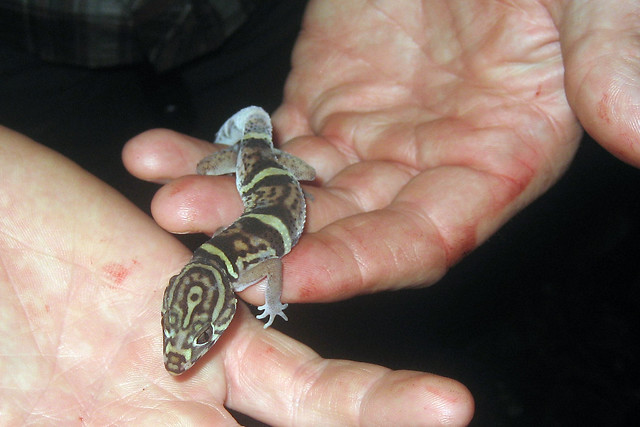No not herpes.
I came back from Belize with one disease, but not herpes.
Readers of this blog should be familiar with herps, our ectothermic friends, the amphibian and reptile.
Honestly, it was not the greatest herping trip and my photos are even worse. It rained. A lot. Even though it was the dry season, which meant I often was without a DSLR and often completely nude of photo taking devices.
However, I did manage to get a few photos from an old point and shoot on a night hike in the
Cockscomb Basin Wildlife Sanctuary. If you find yourself in Belize you have to stay in the sanctuary in one of the rustic cabins. Be prepared to cook for yourself and buy your groceries in Belize City before getting on a long bus ride to Maya Center and then into the Sanctuary.
Our first herp of the night was a Yucatan Banded Gecko,
Coleonyx elegans. This is in the same genus as the banded gecko we find in the Mojave Desert or one might find in Arizona. Its impressive to see what I think of a desert gecko in a secondary rainforest that was getting a lot of rain (a few inches in a few hours the next day).




The next are a couple of Ranids that I am having a beast of a time IDing. Every time I think I have it down, I change my mind. I guess I cannot even be certain that the two individuals I am going to show you are different species. I am fairly familiar with Vaillant's frogs
Rana (Lithobates) vaillanti from previous trips to Central America. The small ones have a lot of green on them, which made me think this frog was not a Vaillant's. That led to the endemic Maya Mountain frog
Rana (Lithobates) juliani. We figured we could go home, look at a bunch of other photos online and figure this mystery out, but I think that has left me more confused. There are likely a lot of mis-identified photos of both of these species in the interwebs. Shocking I know,
someone on the internet is wrong. Maybe it is one of the Rain Frogs,
Craugastor (Eleutherodactylus)?
 |
| Is that a distinct white stripe on the upper lip, indicative of juliani? The upper lip is white but I don't know if that qualifies as distinct. Fingers seem slightly expanded at tips. No good look at toes, but looks like they are webbed. Tympanum looks equal to eye, not larger. |
 |
| Blurry but trying to show the eye to tympanum size ratio |
Below is was the first frog of the night. In the field we were calling this a Vaillant's frog, but that was before I had really considered Maya Mountain frog. We only started thinking
juliani when we found the second frog (first frog in this post, confusing I know) and thought it just seemed different than the first. From Juilan Lee's
A Field Guide to the Reptiles and Amphibians of the Maya World, the tympanum to eye ratio is a some what useful key.
Valliant's Frog: Eyes, moderately large, equal to or exceeding diameter of tympanum ... limbs well developed; toes extensively webbed; tips of digits slightly expanded
Maya Mountain Frog: Eyes large, exceeding tympanum in diameter ... Fingers unwebbed, slightly expanded at tips; toes extensively webbed

 |
| Extensive webbing on back toes, fingers appear to be unwebbed |
 |
| That is a fairly large tympanum. Is that the distinctive white strip on upper lip? It extends pretty far past the jaw though. |
So all opinions on these two frogs are welcome. So so confused.
Not pictured here was a very large adult Vaillant's frog that we saw the following night.
Also not pictured was a coffee snake
Ninia, likely the red-backed coffee snake
Ninia sebae. In an embarrassing lack of recklessness we saw this snake moving through the grass at night and the white neck stripe seemed to appear in more than one place as it moved, reminding us just enough of a coral snake that we didn't attempt to pick it up right away. By the time we realized it was a harmless
Ninia, our guide's answer to "Is it venomous?" was "Only a little" and it was gone all in a matter of 5 seconds. Huge bummer as it turned out to be the only snake of the trip.
More posts from Belize, including some crappy bird photos, to come, maybe ...

















